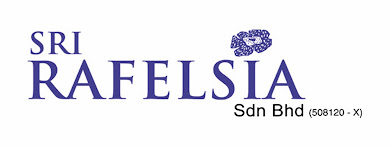In the recent years, dyslexia has come to be known to be a developmental learning difficulty, which is part of a spectrum of difficulties commonly known as specific learning difficulties. Specific learning difficulties the umbrella term, encompasses dyslexia, dyscalculia, dysgraphia and dyspraxia. These difficulties can exist either in isolation or in combination. Dyslexia is the difficulty associated with the written word and with reading skills. Dyscalculia is a difficulty with numbers and numeric skills while dyspraxia is an oral motor difficulty associated with pronunciation and articulation.
In some individuals, dyslexia exists in combination with dysgraphia. What this means is that the reading and spelling difficulties are present along with writing problems. It is common to observe that a pupil with dyslexia who also has handwriting that is illegible or untidy at least. Others may exhibit only dysgraphia with dyscalculia. Some pupils can read well but find difficulties in learning numbers and number skills. Parents of some children with some children who have specific learning difficulties will observe that a small number of them also face difficulties with speech well into the childhood age (3-8 years).These include muffled quality of speech and unclear pronunciation among other difficulties.
Whatever the combination of specific learning difficulties, the pupils will suffer in their academic or intellectual development as ineffective learning takes place. It is also important for parents to bear in mind that there are a host of other difficulties such as poor balance and attention deficits are a result of specific learning difficulties. These tale signs are important and should not be overlooked.
A recent study by scientist at Yale University, published in the Proceedings of the National Academy of Science has suggested that dyslexia is a result of a single gene disorder. Prior studies suggested that dyslexia ran in families and although not hereditary it supposed that specific learning difficulties would be prevalent through those families. So, it is important to bear in mind that gene research into dyslexia is ongoing and has a long way to go.
IMPLICATIONS
Now that it has been established that dyslexia does not exist as a stand-alone learning difficulty, it is important to identify what methods of intervention would be appropriate. Diagnosing specific learning difficulties then becomes a more complicated issue. Unless the child’s school work is evaluated it will be difficult to determine the nature or facet of difficulty faced. Specific learning difficulties has to be diagnosed not only by formal tests such as the Dyslexia Screening Test and Intelligence test but a case history and other aspects of the academic development need to be taken into account as well. Any pupil with a low intelligence will not typically be given a specific learning difficulties diagnosis. One of the major characteristics of specific learning difficulties is high intelligence which is why an intelligence profile is done as a routine in the psycho-educational assessments.
The earlier a specific learning difficulty is detected the better for the individual. As with all other learning difficulties, the importance of early detection and intervention cannot be overlooked.
Early signs of a specific learning difficulty include:
- delayed speech acquisition
- directionality difficulties
- incoherent speech
- difficulty learning to tie shoe laces or fix shoes
- inability to learning nursery rhymes by heart
- high intelligence
- little or no crawling stage rather an early “walker”
- day dreaming
Later signs of a specific learning difficulty include:
- difficulty learning to count or doing multiplication
- poor handwriting – letter formation and inability to stay on the line
- poor concentration on academic work especially when writing, reading, spelling or counting involved
- disruptive in class or does not listen to lesson
- inability to follow instruction when more than one instruction is given
In conclusion, the success of an individuals with specific learning difficulties in later life really depends on how well the learning difficulty was dealt with and how effective intervention was. These creative and dimensional thinkers have many talents and with the “right” kind of intervention and management of the difficulty, the sky is the limit!
Ad Code
Total Pageviews
Translate
Search This Blog
Categories
- #ADD (6)
- #Discipline (2)
- #Dyslexia #SlowLearner #Literacy #Assessment (3)
- #Dyspraxia (2)
- #EducationalAssessments (4)
- #Mental Health (5)
- #Motivation (3)
- #Positive Parenting (6)
- #Self-Esteem (2)
- #SpecificLanguageDisorders (2)
- #assessments (1)
- #assessments #reading #dyslexia #dyscalculia (4)
- #autism (4)
- #awareness #advocacy #mental health (1)
- #behavior management (1)
- #devlangdis (8)
- #dyscalculia (1)
- #dyslexia (6)
- #growth mindset (1)
- #homeschool (4)
- #homeschooling (1)
- #homework (2)
- #parenting (9)
- #reading #dyslexia (1)
- #specialeducation (7)
- #theScienceOfReading (1)
- ADD (7)
- ADHD (3)
- ASD (2)
- Coaching (1)
- EIP (4)
- Educational Assessments (2)
- aspergers (1)
- assessments (4)
- behaviour management (1)
- dysgraphia (2)
- dyslexia centre malaysia (3)
- dyslexia test (4)
- dyslexia testing (1)
- homeschool (3)
LINKS
Contact Form
HTML
Follow
Dyslexia: A Spectrum Disorder
Rosh Vettiveloo
February 19, 2008

Posted by Rosh Vettiveloo
I am a Psychologist (Cognitive) cum Special Educational Needs Consultant in Kuala Lumpur. I work with learners aged 7 onwards on a 1-1 basis both online and face to face. I also provide assessments for exam access arrangements for IGCSE, IB, NESA and diagnosis testing for Learning Difficulties. I am registered with both, the British Psychological Society and Persatuan Psikologi Malaysia.You may like these posts
Popular Posts
Phonics Instruction
July 29, 2010
Another nice little site: Forging partnerships
October 13, 2009
Educational Assessments - not just about ability testing..
March 28, 2017
Featured post
Failure, a part of growth
Rosh Vettiveloo-
February 06, 2023
Footer Menu Widget
Created By Blogspot Theme | Distributed By Gooyaabi Templates




0 Comments